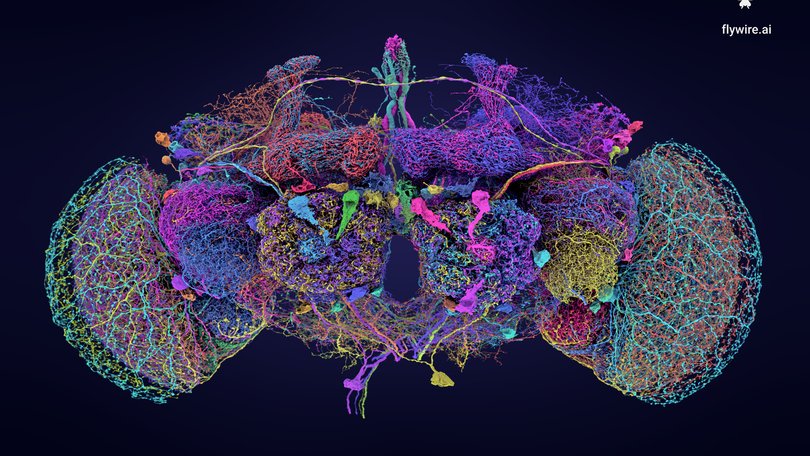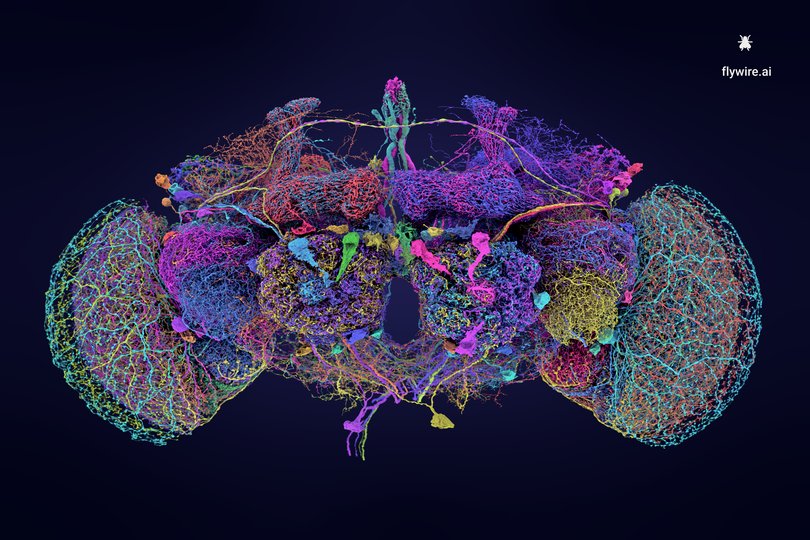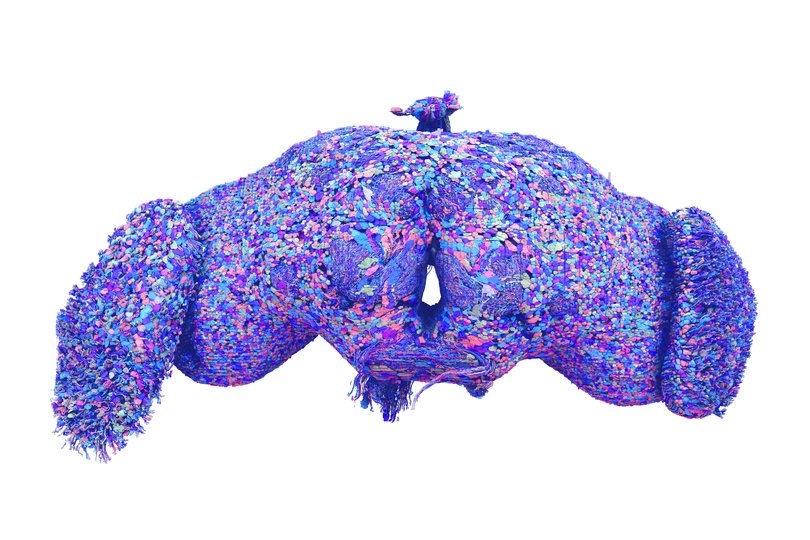THE NEW YORK TIMES: After a decade, scientists unveil fly brain in stunning detail

A fruit fly’s brain is smaller than a poppy seed, but it packs tremendous complexity into that tiny space. Over 140,000 neurons are joined together by more than 490 feet of wiring, as long as four blue whales placed end to end.
Hundreds of scientists mapped out those connections in stunning detail in a series of papers published on Wednesday in the journal Nature. The wiring diagram will be a boon to researchers who have studied the nervous system of the fly species, Drosophila melanogaster, for generations.
Previously, a tiny worm was the only adult animal to have had its brain entirely reconstructed, with just 385 neurons in its entire nervous system. The new fly map is “the first time we’ve had a complete map of any complex brain,” said Mala Murthy, a neurobiologist at Princeton who helped lead the effort.
Sign up to The Nightly's newsletters.
Get the first look at the digital newspaper, curated daily stories and breaking headlines delivered to your inbox.
By continuing you agree to our Terms and Privacy Policy.Other researchers said that analyzing the circuitry in the fly brain would reveal principles that apply to other species, including humans, whose brains have 86 billion neurons.
In one of the new studies, the researchers tackled the mystery of how sensory signals flow through the brain and prompt it to produce commands. They created a computer simulation of the complete fly brain. When presented with simulated tastes, the artificial brain produced signals to stick out the tongue.
Sebastian Seung, another leader of the project at Princeton, said the simulations reminded him of long-running speculations about how “mind uploading” could allow us to transfer our brains into computers.
“Mind uploading has been a science fiction, but now mind uploading — for a fly, at least — is becoming mainstream science,” Seung said.
The mapping began in 2013, when Davi Bock, a neuroscientist then at the Janelia Research Campus of the Howard Hughes Medical Institute in Virginia, and his colleagues dunked the brain of an adult fly in a chemical bath, hardening it into a solid block. They shaved an exquisitely thin layer off the top of the block and used a microscope to take pictures of it.

Then the scientists shaved another layer and took a new picture. To capture the entire brain, they imaged 7,050 sections and produced about 21 million pictures.
Seung and his colleagues also developed software to interpret these images. They programmed computers to recognize the cross-sections of neurons in each picture and stack them into the 3D shapes of the cells.
The computers sometimes made mistakes, such as by creating two neurons that passed straight through each other. A team of Drosophila experts and enthusiasts inspected the map and corrected its errors.
It took more than a decade for the scientists to produce the first high-resolution model of the fly brain. Based on the different shapes of the neurons, Gregory Jefferis, a neuroscientist at the University of Cambridge, and his colleagues classified the cells into 8,453 distinct types, making it the biggest catalog of cell types in any brain. (Scientists have identified only 3,300 cell types in the human brain.)
By tracing the neurons through the map, Murthy and her colleagues have gleaned clues about what those different types of cells do.
Some types of neurons, for example, command walking flies to come to a halt. One circuit, researchers found, stops the flies by blocking the walking commands, and a second stops a fly by stiffening its leg joints.
Philip Shiu and his colleagues at the University of California, Berkeley, used the map to build a virtual fly brain, with simulated neurons passing signals to connected cells.
Shiu’s team tested the simulated brain by seeing how it responded to food. A fly’s tongue-like proboscis is covered in neurons that are sensitive to sugar. The researchers activated them and watched the signals race through the fly’s brain.
The simulated brain did what a real brain would: It commanded the proboscis to stick out so that the fly could eat. And if the virtual fly tasted sugar only on the right side of its proboscis, the brain sent commands to bend it toward the right.

Anita Devineni, a Drosophila expert at Emory University who was not involved in the project, said she relied on the new resource to plan new experiments. “We’re using this for everything we do,” she said.
Murthy and her colleagues hope to use the fly map to discover fundamental rules for complex brains, such as how the wiring of neurons allows signals to spread across an entire brain quickly. But they also recognize that bigger brains may not follow all of the same rules.
Now researchers are embarking on a far more ambitious map: a mouse brain, which contains about 1,000 times as many neurons as a fly.
Hongkui Zeng, a neuroscientist at the Allen Institute for Brain Science in Seattle who was not involved in the project, said that the completion of the fly map could help speed up the mouse brain project. Zeng said such improvements were essential to complete the new map in our lifetimes.
“Any improvement could make a large difference,” Zeng said. “We can’t wait 10,000 years.”
This article originally appeared in The New York Times.
© 2024 The New York Times Company
Originally published on The New York Times
